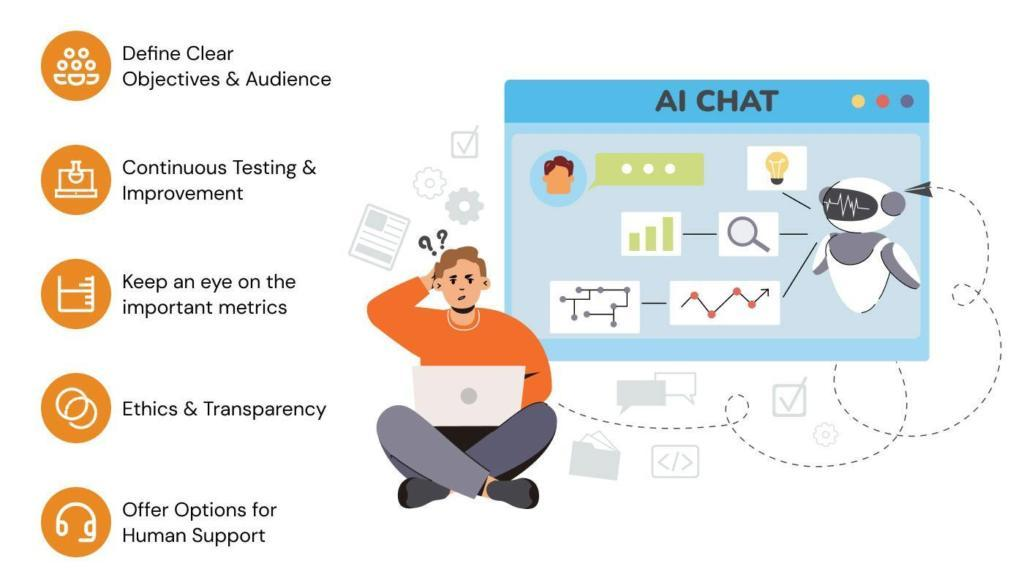The world of chatbots has come a long way. Gone are the days when a bot could only offer rigid, pre-programmed responses based on a few keywords. Today, the demand is for something far more sophisticated: intelligent bots that truly understand what a user means, not just what they say, and can remember the conversation’s history. This shift from simple automation to genuine, context-aware interaction is a game-changer for businesses and users alike.
As someone who designs and develops these next-generation conversational AI solutions, I’ve seen firsthand how crucial it is to move beyond superficial interactions. To truly unlock the power of conversational AI, you need to build custom bots that grasp the nuances of human language – the intent behind the words and the evolving context of a dialogue. By 2029, the global AI chatbot market is anticipated to soar to a substantial $46.64 billion, reflecting a strong growth trajectory with a projected CAGR of 24.53%. Let’s explore the architectural layers and psychological considerations that make this level of intelligence possible.
The Limits of Simple Bots: Why Context and Intent Matter
Think about a typical frustrated experience with an old-school chatbot. You ask a question, and it responds with something completely irrelevant because it only picked up on a single word, ignoring the overall meaning. Or perhaps you had to repeat information you just provided a moment ago because the bot “forgot” the previous turns of the conversation.
These limitations stem from a lack of:
- Intent Understanding: The bot doesn’t grasp the underlying goal or purpose of the user’s query. Is the user asking about a product, trying to buy a product, or looking for support for a product?
- Contextual Awareness: The bot doesn’t remember previous interactions, or understand environmental factors (like time of day, location, or customer history). It treats every query as if it’s the first.
Without intent and context, bots are merely glorified FAQs. With them, they become powerful assistants, capable of complex problem-solving and personalized interactions.
Decoding the Human Mind: The Pillars of Intelligent Bot Design
Building bots that understand context and intent is a multi-faceted challenge, combining advancements in artificial intelligence, natural language processing, and careful design principles. Here are the core components an expert conversational AI developer focuses on:
1. Natural Language Understanding (NLU): Grasping the “What” and “Why”
NLU is the foundation. It’s the AI’s ability to interpret human language – text or speech – to identify the intent (the user’s goal) and extract entities (key pieces of information relevant to that intent).
- Intent Recognition: This involves training the bot to map various user utterances to a specific underlying goal. For example, “I want to track my order,” “Where’s my package?”, and “Has my delivery shipped?” all share the same “track_order” intent. The more diverse training examples provided, the better the bot becomes at recognizing these intentions, even with varied phrasing.
- Entity Extraction: Once the intent is identified, entities are the crucial details. In “track my order number 12345,” “12345” is the order number entity. In “book a flight to London next Tuesday,” “London” is the destination and “next Tuesday” is the date. Extracting these correctly is vital for fulfilling the request.
- Disambiguation: Sometimes, user input can be ambiguous. NLU models are designed to ask clarifying questions when needed, ensuring they’ve correctly interpreted the user’s intent or extracted the right entity.
2. Dialogue Management: Remembering and Responding Coherently
This is where the bot keeps track of the conversation’s flow, ensuring it remembers previous turns and responds logically and coherently.
- State Management: The bot maintains a “state” for each conversation, tracking information like the current topic, previously provided details, and completed steps. If a user asks “What’s the weather like?”, and then “How about tomorrow?”, the bot remembers the initial context (weather) and the location, applying “tomorrow” to that existing context.
- Slot Filling: Many intents require several pieces of information (or “slots”) to be filled before an action can be taken. For booking a flight, slots might include destination, departure date, return date, and number of passengers. Dialogue management guides the conversation to collect all necessary information, prompting the user for missing details.
- Turn Management: Deciding when it’s the bot’s turn to speak, what to say, and how to transition smoothly between topics are all part of effective dialogue management. It ensures the conversation feels natural, not disjointed.
3. Contextual Awareness: Beyond the Current Conversation
True intelligence in bots extends beyond just remembering the current chat. It involves pulling in external information to provide more relevant and personalized responses.
- User History: Integrating with CRM systems or past interaction logs allows the bot to remember previous purchases, support tickets, or preferences. “Welcome back, John! Are you calling about your recent laptop purchase?” is far more effective than a generic greeting.
- External Data Sources: Bots can access real-time information from databases, APIs, or knowledge bases. This allows them to answer questions about product availability, order status, current store hours, or flight delays with up-to-the-minute accuracy.
- Environmental Factors: Understanding the user’s location, time zone, or even device type can influence the bot’s responses, making them more relevant.
4. Natural Language Generation (NLG): Crafting Human-Like Responses
NLG is the art of turning structured data and insights into fluid, human-like text responses. It’s not just about spitting out pre-written sentences; it’s about generating dynamic, contextually appropriate replies.
- Dynamic Content: Responses are assembled on the fly, incorporating extracted entities and contextual information. Instead of “Your order is X,” it becomes “Great news, Sarah! Your order #12345 is expected to arrive by Tuesday.”
- Tone and Style: Advanced NLG can adapt the bot’s tone (e.g., formal, friendly, empathetic) based on the conversation’s context, the user’s sentiment, or brand guidelines.
- Summarization and Elaboration: Intelligent bots can summarize complex information or elaborate on details when asked, presenting information clearly and concisely.
The Architect’s Mindset: Key Principles for Intelligent Bots
Beyond the technical components, building truly intelligent bots requires a specific mindset and adherence to core design principles:
- User-Centric Design: Always start with the user’s needs, goals, and pain points. What problems are they trying to solve? How can the bot make their life easier? This empathy guides every design decision.
- Graceful Handoff: Intelligent bots understand their limitations. When a query is too complex, too sensitive, or requires human empathy, a well-designed bot will seamlessly hand off the conversation to a live agent, providing all the relevant context gathered so far. This prevents frustration and builds trust.
- Continuous Learning & Improvement: Bots are not static. They must continuously learn from interactions, feedback, and new data. This involves monitoring performance, identifying areas where the NLU needs refinement, and expanding the bot’s knowledge base.
- Ethical Considerations & Bias Mitigation: Bots reflect the data they are trained on. It’s crucial to proactively address potential biases in data and ensure the bot’s responses are fair, unbiased, and respectful. Transparency about the bot’s capabilities is also key.
- Scalability & Performance: An intelligent bot must be able to handle a high volume of simultaneous conversations without sacrificing speed or accuracy. The underlying architecture needs to be robust and capable of growing with demand.
The Future of Conversation
The evolution of intelligent bots from simple scripts to sophisticated conversational partners marks a significant leap in how businesses interact with their customers and employees. By meticulously designing for context and intent, conversational AI developers are not just building tools; they are engineering intuitive, empathetic, and highly efficient digital assistants. This deep understanding of human language and behavior is transforming customer service, streamlining operations, and ultimately, creating more meaningful digital experiences for everyone. Indeed, the very landscape of information access is shifting; Gartner, Inc. forecasts that by 2026, traditional search engine volume will decline by 25%, as search marketing increasingly yields ground to AI chatbots and other virtual agents. The future of communication is intelligent, and it’s built on a foundation of true understanding.
READ ALSO: Tesla Humanoid Robot: Opening a New Chapter in Future Human-Machine Collaboration











